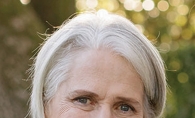
Greg Gibson has been the board president of the Wayzata Youth Hockey Association (WYHA) for 17 years. In that time he’s mastered the responsibilities that come with the position: balancing a million-dollar budget, establishing direction for the nonprofit organization’s growth, and handling the day to day hustle and bustle. There is one skill, however, that most people are surprised he has never learned to do—play hockey.
“I’m not a threat to anybody’s hockey knowledge,” says Gibson with a laugh. He turned 64 last October and has no plans to tie skates on anytime soon. “I think I’ll just keep my administrative role,” he explains. Despite never actually hitting the ice, Gibson can clearly see the value in Minnesota’s favorite winter sport and the 50-year-old organization he has spent almost two decades presiding over. “You see the good things that hockey does for these young boys and girls, what kids can learn when they grow up on a team,” he says. “You don’t always win at everything you do; you have to have some failures in there too. Hockey is a great place for kids to learn that.”
While life skills like teamwork and humility might come packed into the hockey experience, the WYHA has essentially focused on developing athletic abilities and teaching the game for the last half a century. Encompassing a competitive ice hockey program for youth ages 5 to 19 in Minnesota School District 284, the Association saw a historic 1,025 players sign up for the sport in fall 2018. Current players Jay, Julia and Josephine Lindahl are in 11th, ninth and sixth grade. They all like different aspects of hockey. Jay enjoys the many skills hockey players need to have, while Julia favors the competition and intensity of the games. Josephine likes being with her friends and learning about the sport. Her favorite part? “Fist-bumps with teammates during games and the on-ice celebrations after wins,” she says. All three plan on playing the sport well into the future.
Jay, Julia and Josephine’s dad, Jonathan Lindahl, has been a coach for more than 16 seasons at WYHA. He enjoys the connections he’s created among his peers, and the opportunity to spend more time with his kids. “I’ve made some awesome lifelong friends—parents, players and other guys with whom I’ve coached. But I think it’s also enhanced the relationship a little with my four kids,” explains Lindahl. “Being their coach has given me a little window into them—seeing how they interact with friends and teammates in various situations, on ice and off.” These connections seem to abound in close-knit hockey communities like WYHA. This is important, as WYHA is run almost entirely by volunteers, and depends on the time and efforts of hockey family and friends. Hundreds of people have contributed to growing the organization since its inception decades ago.
One of the people with a hand in the WYHA since the very beginning is Jerry Jensen. “Like many of the WYHA volunteers, I’ve had every role possible—that’s what happens when you’re old,” he jokes. Jensen played in the very first year of the Association, and since then has coached at every level, aided in fundraising efforts and been a member of both the coaches association and board of directors. He’s impressed with the WYHA’s growth. “The change is amazing,” he says, recounting the start of the organization. The WYHA was created by Wayzata High School hockey coach Ed Miller in 1968, when it was known as the District 284 Youth Hockey Association and had about 180 members. Now, WYHA has grown to include four indoor rinks where 700 boys, 400 girls and countless adult volunteers get together to play.
Throughout his many roles, Jensen says the connections he formed with players when he was a coach have been the most rewarding part of his hockey career. “To have kids and young men come up to you and shake your hand and say, ‘Hi Coach,’ there’s something very special about that, ” he says. Greg Gibson, board president, agrees the community formed around WYHA is unique. “There’s a connectivity there between parents, players, coaches, the city, the school system—it’s really community-based.” He adds that some of the best friends he and his wife have are families they met when their son played hockey.
Regarding his own connection to hockey culture, Jonathan Lindahl says, despite the cliché, hockey was just in his blood. “I was a second-generation player fortunate to grow up in the heart of it, being a farm boy from the small town of Hallock,” he says. “For us, there were two seasons: farming and hockey.” He explains that while many may not find the dark nights, snowy car rides or freezing rinks appealing, there’s just something special about being a part of a hockey community. “It helps us embrace the long, cold winters, and in a subtle manner, seems to provide a comforting rhythm to our years together as families,” he says. His children represent a third generation of Lindahls playing Minnesota hockey.
When asked why he thinks kids keep coming back to hockey, Greg Gibson has a simple answer. “Everybody plays. There are no real benchwarmers,” he explains. “My son was better at other sports, but he kept playing hockey because he said it was more fun.” WYHA veteran Jensen concurs. “The kids love the game, love to compete and love to compete with their friends,” he says. “Plus, they have fun and learn about themselves and their friends in the process. It’s so much fun, you never want it to end.” With the strong bonds and close-knit community that has helped the WYHA thrive over the last 50 years, it seems likely that the organization will keep everybody playing for the next 50 to come.









